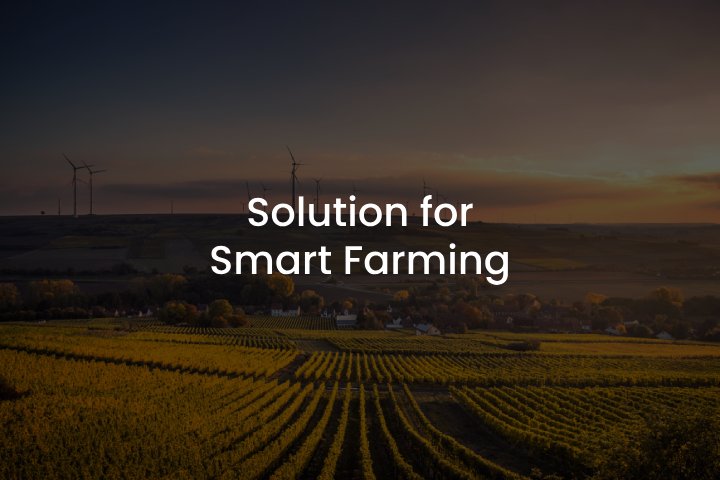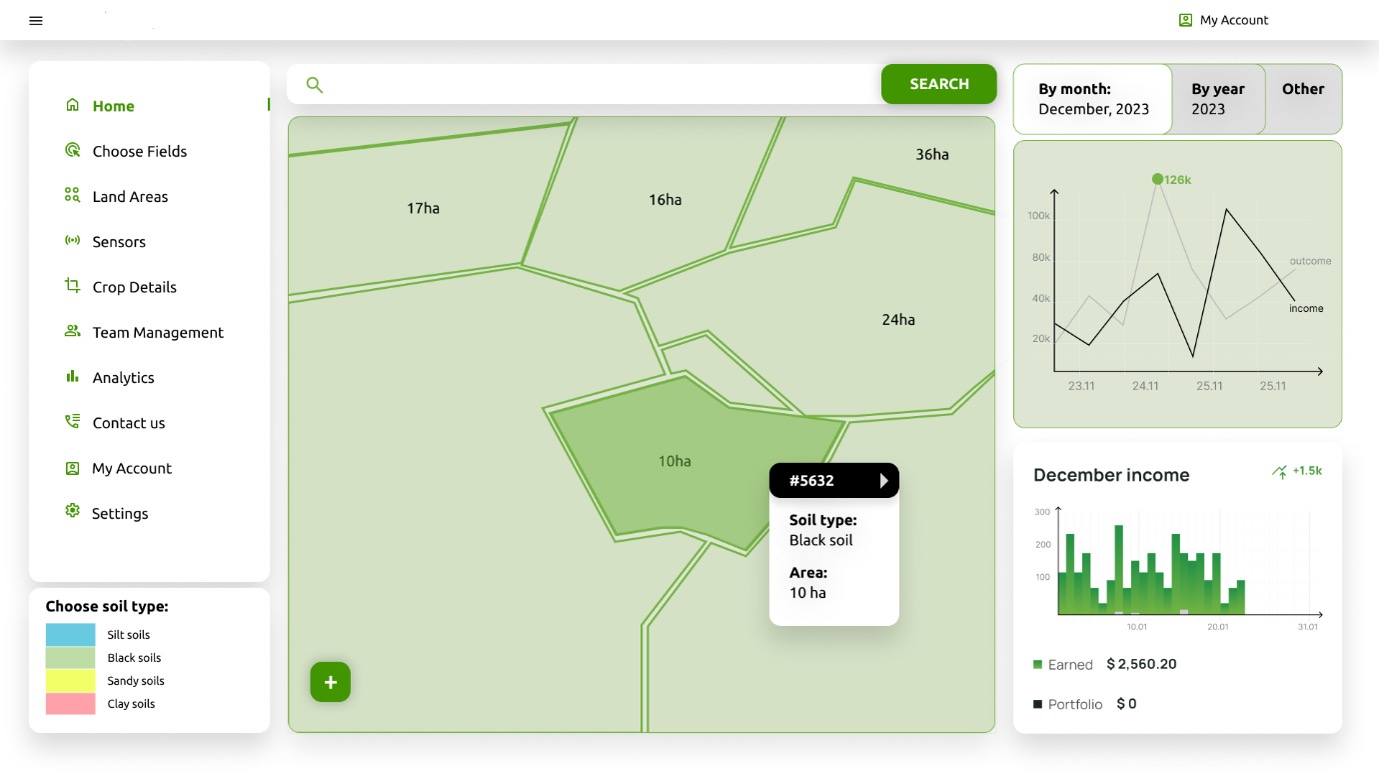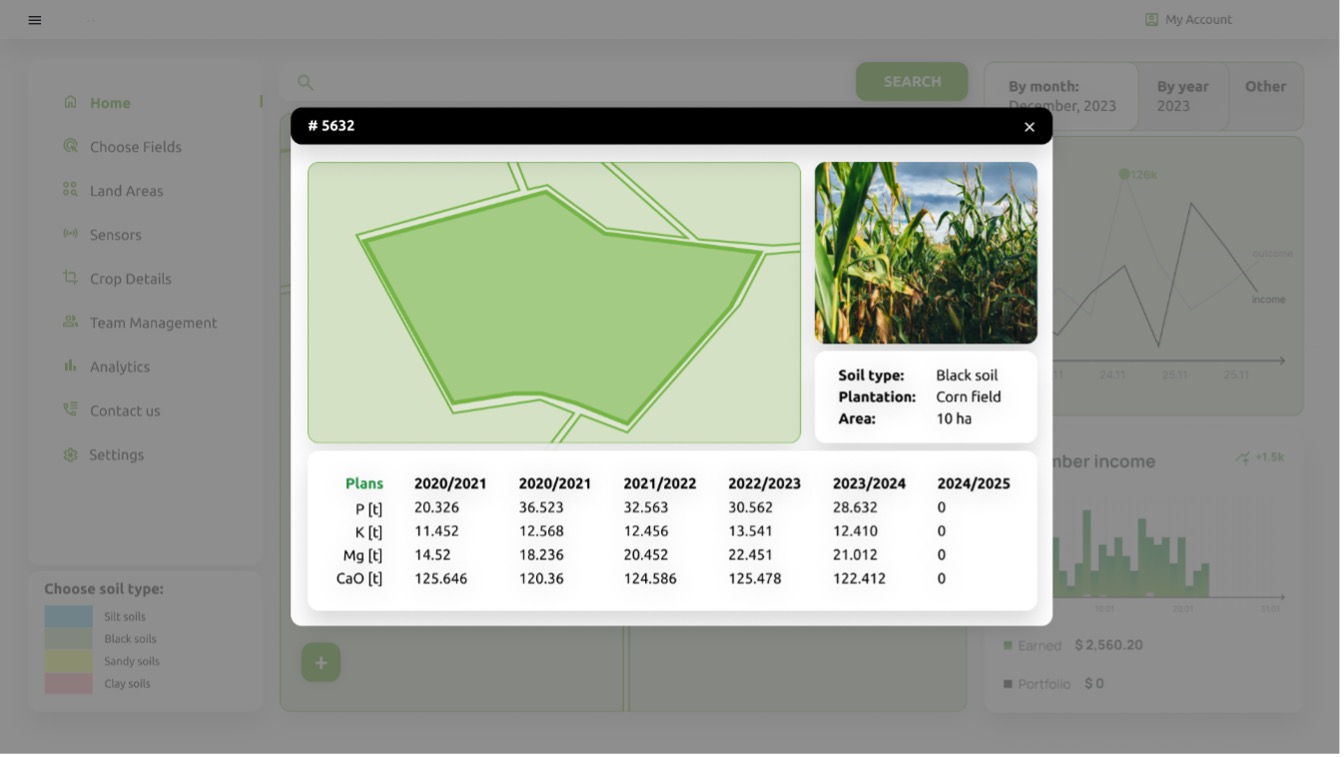
Complex Solution for Agriculture Industry/Smart Farming
The digital transformation of agriculture is gaining huge recognition owing to the advancement in AgriTech as well as the speed at which they are being adopted. The digitization of crop cultivation represents a progression from individual precision farming solutions to a fully integrated management system within the enterprise, revolutionizing the way we approach and enhance plant cultivation practices.
In the article, we share our experience in building a solution for our German dedicated to devising innovative strategies for plant cultivation. The client partnered with Agiliway to help further develop their AgriTech solution, test the system, enhance the overall user experience, and implement cutting-edge technological innovations.
What were the requirements for the Agritech solution?
The primary scope of tasks assigned to the Agiliway team consisted of upgrading the current system, modernizing obsolete functionality, setting the system to process large volumes of data, and optimizing the fertilizer distribution system to reduce wastage.
While working on the project, the team focused on covering the following challenging parts of the project:
- To comprehend all the processes, since the system also contains additional fertilization calculations and saving map coordinates performed during or before the data-saving process.
- To add the ability to split or merge farm field borders within the system so that fertilizer distribution is in amounts as required by the field scan.
- To add functionality to fertilizer distribution plans, therefore each sub-plan can be separately calculated and edited/deleted.

Provided Solutions for the Agriculture Industry
The system consists of a complex dashboard where users can view all the data related to soil fertilization, field works, crop protection, and other farming records.
- Users can pick a year and location and view crop yield for the given period. The solution depicts the data in both tables and maps, where all the crops are assigned a specific color.
- Map: users add fields by drawing on the maps and further all the details regarding the crops that are planned to be grown there. Another way to add maps is using machinery (i.e., tractors), which take a sample of land and scan it as it rides through it. Later, these data are uploaded into the system.
- Crop rotation: the system allows the choice of main and secondary crops for a certain field. This way, farmers can analyze how these cultures rotate every season and what changes to the soil shall be made to increase the crop yield.
- Soil sampling of fields: users can view the soil sampling results based on the moisture and nutrient content level.

Soil fertilization: Farmers can choose a field and what fertilizers shall be added to that area. The system allows setting both the type of fertilizers and a specific product brand. Then, that machinery uses the data from the solution and applies fertilizers.
Nutrient distribution: Based on soil sampling, farmers can see how the microelements are distributed across the fields.
Among the most critical technical solutions were:
- Splitting and merging fields
After fixing the initial bugs in the system, it now allows the control of fertilizer distribution as required by the calculations and soil sampling. Additionally, users can now perform the manipulations with their fields by themselves as opposed to earlier when all changes should have been made by our client’s team.
- Expanding the functionality of sub-plans
Unlike earlier, it is not necessary to create a separate plan for each field. Now, a list of fields can be collected, and one type of fertilizer for these fields can be approved within one plan along with the option of distributing fertilizers in different quantities for each field separately.
- Adding a satellite view option
Adding satellite view with different map scans using geo satellite abilities to provide another overview of field composition and plant growth.
Summary
The solution provides a huge advantage for farmers as they can meticulously plan and optimize their work process, which results in saving time, lower management costs, and a more efficient use of machinery and resources. Automation of multiple processes became a huge advantage as users no longer have to manually add the necessary information to the maps.
The complex system allows for managing farming fields more efficiently, therefore, reducing the wastage of fertilizers, increasing crop yield, and making data-driven decisions to grow their business.
If you need help with elevating your AgriTech solution, contact Agiliway and our experts will gladly help you.


